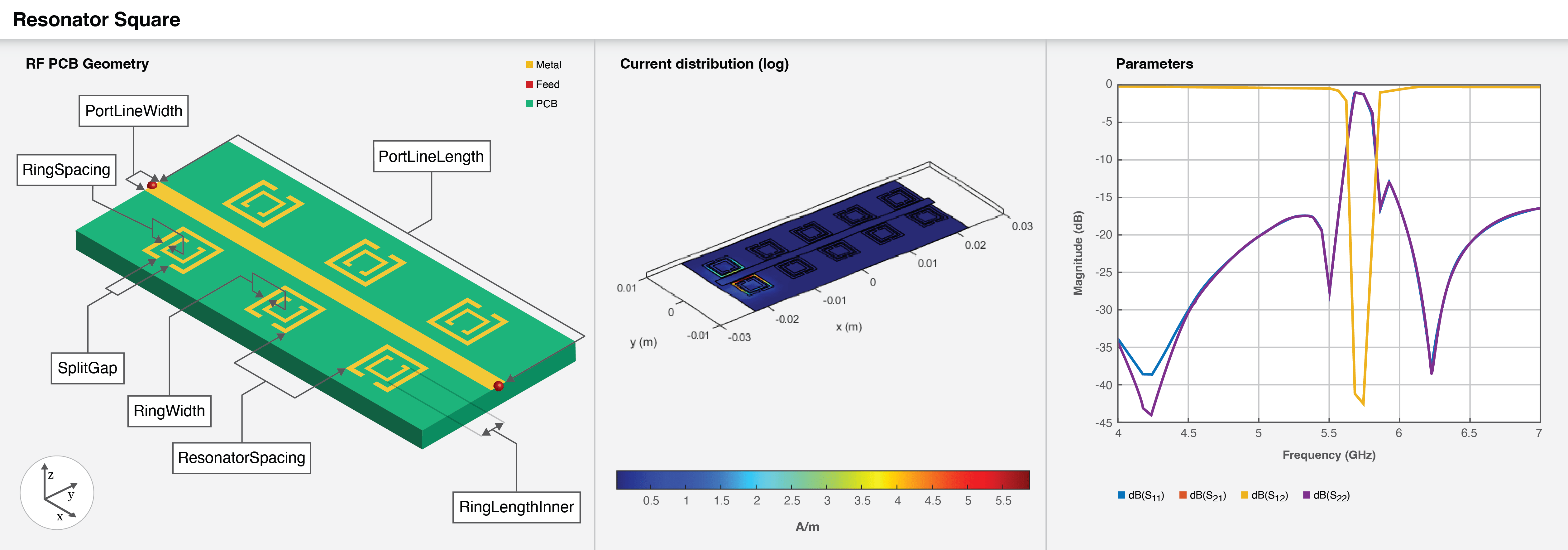resonatorSplitRingSquare
Description
Use the resonatorSplitRingSquare object to create a microstrip
line loaded with a square split-ring resonator.

Creation
Description
resonator = resonatorSplitRingSquare creates a microstrip line
loaded with a square split-ring resonator on the
X-Y plane. The default proprieties are for a
design frequency of 5.7 GHz.
resonator = resonatorSplitRingSquare(
sets Properties using one or more
name-value arguments. For example,
Name=Value)resonatorSplitRingSquare(RingWidth=0.045) creates a square
split-ring resonator with a ring width of 0.045 meters. Properties
not specified retain their default values
Properties
Object Functions
charge | Calculate and plot charge distribution |
current | Calculate and plot current distribution |
design | Design hairpin filter around specified frequency |
feedCurrent | Calculate current at feed port |
getZ0 | Calculate characteristic impedance of transmission line |
layout | Plot all metal layers and board shape |
mesh | Change and view mesh properties of metal or dielectric in PCB component |
shapes | Extract all metal layer shapes of PCB component |
show | Display PCB component structure or PCB shape |
sparameters | Calculate S-parameters for RF PCB objects |
RFConnector | Create RF connector |
Examples
References
[1] Pozar, David.M. Microwave Engineering Singapore; JohnWiley and Sons. Inc, 2012.
[2] Mahyuddin, Muzlifah and Nur Farah Syazwani Ab. Kadir. Design of a 5.8 GHz Bandstop Filter Using Split Ring Resonator Array
[3] Mahyuddin, Muzlifah and Nur Farah Syazwani Ab. Kadir. “A 10 GHz Low Phase Noise Split-Ring Resonator Oscillator.” International Journal of Information and Electronics Engineering, 2013.

